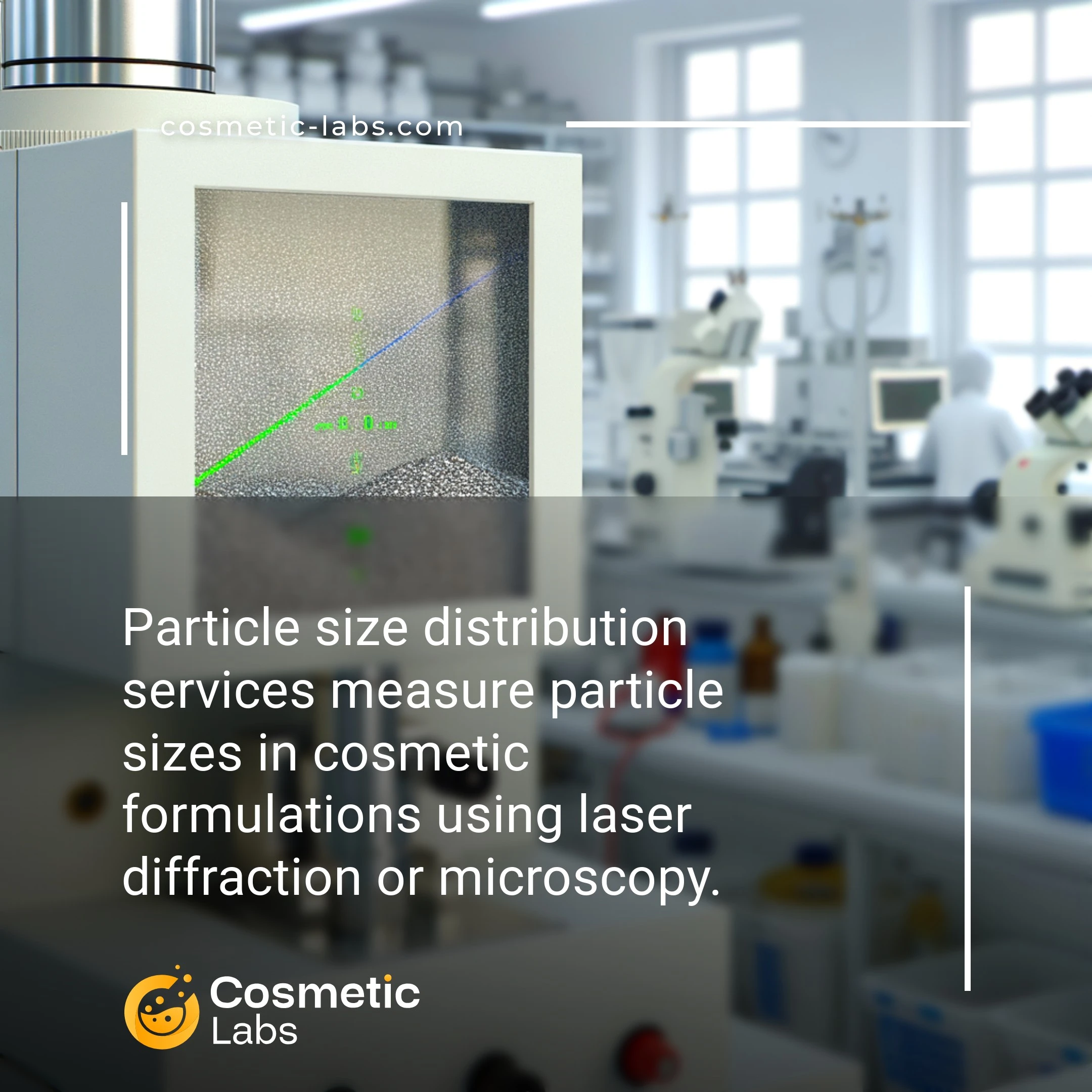Particle Size Distribution Services for Cosmetic Product Development

What is Particle size distribution?
Particle size distribution analysis measures the range and frequency of particle sizes in your cosmetic ingredients and finished products, from submicron pigments to exfoliating beads. Labs use laser diffraction or dynamic light scattering to map these distributions, helping you achieve consistent texture, stability, and skin feel across batches. This data directly impacts how your sunscreen spreads, whether your foundation clumps, or if your scrub particles are gentle enough for daily use.
Why do you need this service?
Cosmetic labs use particle size distribution analysis to optimize sunscreen formulations by measuring titanium dioxide and zinc oxide particles, ensuring they stay within the 20-100 nanometer range for maximum UV protection without white residue. Labs also apply this testing to color cosmetics, verifying pigment particles measure 5-25 microns for smooth application and even coverage across foundations and eyeshadows.
Who provides Particle size distribution services?
All cosmetic labs providing Particle size distribution services
There is no company providing these services at the moment.
Particle Size Distribution Analysis for Cosmetic Products
Particle size distribution testing directly impacts how your cosmetic products perform, feel, and look on the skin. Labs on our platform measure particle dimensions from nanometers to millimeters, giving you precise data about your formulations’ physical characteristics.
Testing Methods and Applications
Cosmetic testing laboratories use laser diffraction, dynamic light scattering, and microscopy to analyze particle sizes in your products. These measurements matter for texture optimization, stability testing, and regulatory compliance.
- Powders and pigments: 0.1-100 micrometers for coverage and blendability
- Emulsions: 50-500 nanometers for stability and skin feel
- Sunscreen actives: 20-200 nanometers for UV protection efficacy
- Exfoliating particles: 100-1000 micrometers for gentle skin renewal
Labs typically complete particle analysis within 3-5 business days, providing detailed reports with size distribution curves and statistical data.
Quality Control and Batch Consistency
Regular particle size monitoring helps you maintain product consistency across production batches. Testing labs check samples at different production stages to identify size variations that could affect product performance.
Key quality metrics include:
- D50 values (median particle size)
- Span calculations for distribution width
- Specific surface area measurements
- Agglomeration detection
Partner laboratories on our platform offer both one-time analysis and ongoing quality control programs, with pricing typically ranging from $200-800 per sample depending on complexity and turnaround time.
Practical Applications of Particle Size Analysis in Cosmetic Development
Particle size distribution testing directly impacts product performance, stability, and consumer experience across multiple cosmetic categories.
Emulsion Stability and Texture Optimization
Labs use particle size distribution analysis to predict emulsion stability in creams and lotions. Measurements between 0.1-10 micrometers indicate stable formulations, while larger droplets signal potential separation issues. Testing protocols include dynamic light scattering (DLS) for nano-emulsions and laser diffraction for standard emulsions.
Texture profiles correlate directly with particle size ranges. Products with D50 values under 5 micrometers deliver silky textures, while 10-20 micrometer ranges create richer, more cushioned feels that consumers associate with premium moisturizers.
| Product Type | Target Size Range | Key Benefit | Testing Method |
|---|---|---|---|
| Face Serums | 50-200 nm | Enhanced penetration | DLS |
| Body Lotions | 1-10 μm | Smooth application | Laser diffraction |
| Sunscreens | 100-400 nm | Transparency on skin | DLS + Microscopy |
| Powder Foundation | 5-15 μm | Buildable coverage | Dry dispersion |
Pigment Dispersion for Color Cosmetics
Color consistency depends on uniform pigment distribution. Labs measure particle sizes to achieve target shade intensity and prevent color shifting during storage. Iron oxide particles sized 200-400 nanometers provide optimal coverage in foundations without creating a mask-like finish.
Grinding and milling times correlate with final particle dimensions. A 30-minute ball mill process typically reduces pigment clusters from 50 micrometers to the 1-5 micrometer range needed for smooth lipstick application. Labs track D10, D50, and D90 values to ensure batch-to-batch consistency.
